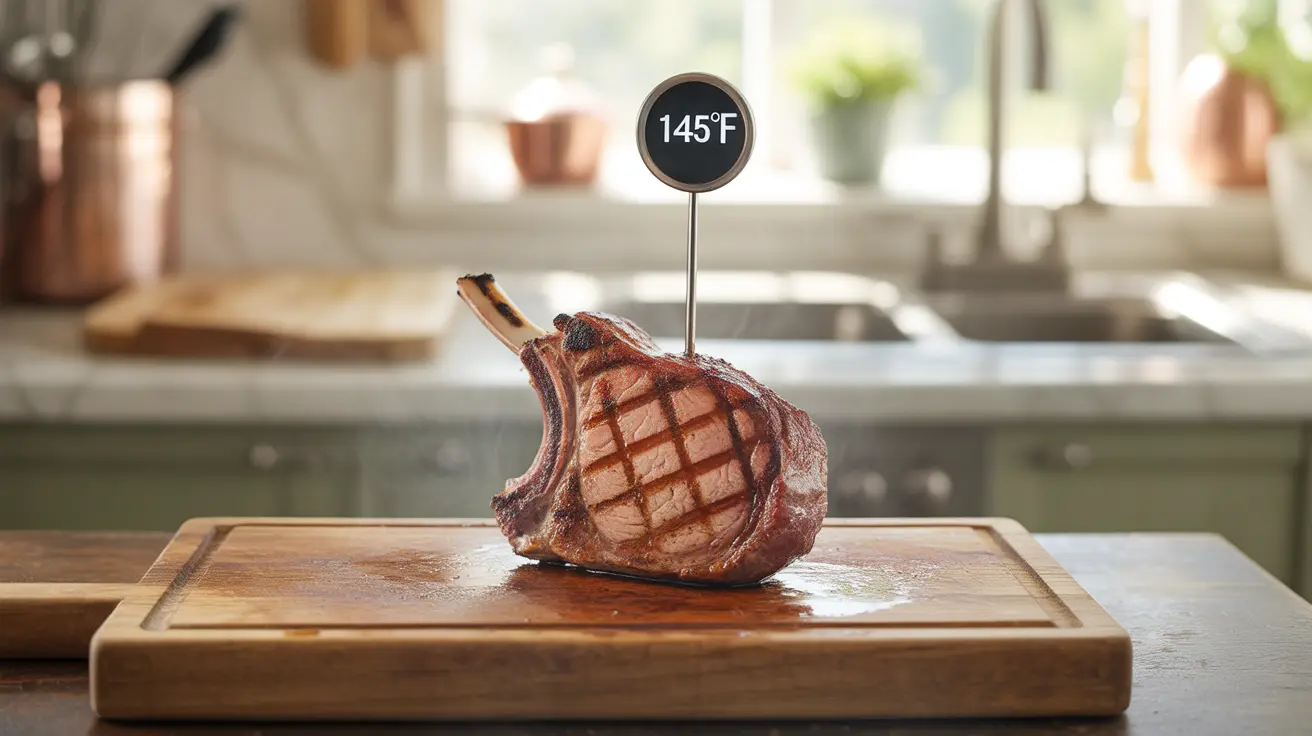Getting your pork cooked to the right temperature is crucial for both food safety and achieving the perfect texture. Whether you're preparing a tender pork loin, juicy chops, or fall-off-the-bone ribs, understanding proper internal temperatures will help you serve delicious, safe pork dishes every time.
In this comprehensive guide, we'll explore the recommended internal temperatures for different cuts of pork, proper resting times, and how to use a meat thermometer effectively to ensure your pork is cooked to perfection.
Safe Internal Temperature Guidelines for Pork
The USDA recommends cooking whole muscle cuts of pork to an internal temperature of 145°F (63°C), followed by a rest period. This temperature ensures food safety while maintaining the meat's juiciness and tenderness. The pork may still show a pink color at this temperature, which is perfectly safe to eat.
Different Temperature Requirements for Various Cuts
While 145°F is the baseline for whole muscle cuts, certain pork cuts benefit from different cooking temperatures:
- Whole muscle cuts (loin, chops, tenderloin): 145°F
- Ground pork: 160°F (71°C)
- Pork shoulder/butt: 195-205°F (91-96°C)
- Ribs: 190-203°F (88-95°C)
The Importance of Resting Time
After reaching the target temperature, letting your pork rest is essential for optimal results. During this period, the meat's internal temperature will continue to rise slightly, and the juices will redistribute throughout the cut, ensuring a more flavorful and tender final product.
Recommended Resting Guidelines
Follow these resting times for different pork cuts:
- Whole muscle cuts: 3-5 minutes minimum
- Larger roasts: 10-15 minutes
- Pork shoulder/butt: 30-45 minutes
- Ribs: 10-15 minutes
Using a Meat Thermometer Correctly
A reliable meat thermometer is your best tool for ensuring properly cooked pork. Here's how to use one effectively:
- Insert the thermometer into the thickest part of the meat
- Avoid touching bone, fat, or gristle
- Wait for the temperature reading to stabilize
- Clean the thermometer between uses
Low and Slow Cooking for Tender Results
Some pork cuts, like shoulder and ribs, benefit from cooking to higher temperatures because this allows the tough connective tissues to break down into gelatin, resulting in tender, succulent meat. This process requires patience and proper temperature control.
Frequently Asked Questions
- What internal temperature should I cook pork to for it to be safe and juicy?
Cook whole muscle cuts of pork to 145°F (63°C) for safe and juicy results. Ground pork should reach 160°F (71°C).
- How long should I let pork rest after cooking to 145°F before serving?
Let pork rest for at least 3-5 minutes after reaching 145°F. Larger cuts may need 10-15 minutes of resting time.
- What is the recommended cooking temperature for ground pork compared to whole cuts?
Ground pork should be cooked to 160°F (71°C), while whole cuts can be safely consumed at 145°F (63°C).
- Why does cooking pork shoulder and ribs to higher temperatures make them more tender?
Higher temperatures (190-205°F) allow the tough collagen in these cuts to break down into gelatin, resulting in more tender, fall-apart meat.
- How can I accurately check if pork is done using a meat thermometer?
Insert the thermometer into the thickest part of the meat, avoiding bone and fat. Wait for the reading to stabilize, and ensure the temperature meets the recommended minimum for that specific cut.




